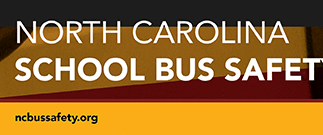Tornado Preparedness
The following was shared with us from the state transportation director in Iowa, Terry Voy. It was prepared for their state's bus driver manual.
From Iowa’s bus driver manual:
Every driver of a school bus should have some basic knowledge of tornado information and the precautionary measures to take
when a warning or a sighting is made.
1. What is a tornado?
A tornado is a violently rotating column of air descending from a thunderstorm cloud and touching the ground. It nearly always starts as a funnel-shaped rotating extension from a thunderstorm cloud, builds downward to the ground and grows dark as it picks up debris.
2. Under what conditions do most tornadoes occur?
Tornadoes form several thousand feet above the earth’s surface, usually during warm, humid, unsettled weather, and usually in conjunction with a severe thunderstorm. They require the presence of layers of air with contrasting characteristics of temperature, moisture, density and wind flow.
3. During what time of day are tornadoes most likely to develop?
Tornadoes are most likely to occur at mid-afternoon, generally between 3 and 7 p.m., but they have occurred at all times of the day.
4. What direction does a tornado move?
Usually from southwest to northeast.
5. What is the length of a tornado path?
Tornadoes generally average about 4 miles, but may reach 300 miles. A tornado traveled 293 miles across Illinois and Indiana on May 26, 1917, and lasted 7 hours and 20 minutes.
6. How wide is their path?
It averages about 300 to 400 yards, but tornadoes have cut swaths a mile and more in width.
7. How fast do they travel?
Average speed of a tornado is from 25 to 40 miles per hour, but speeds ranging from stationary to 68 miles per hour have been reported.
8. Is it true that if it rains there is no chance of a tornado?
No!! Precipitation associated with the tornado usually occurs first as rain just preceding the storm, frequently with hail, and as a heavy downpour immediately to the left of the tornado’s path.
9. Can you hear a tornado?
DEFINITELY YES!! A tornado has been described as a roaring, rushing noise, closely approximating that made by a train speeding through a tunnel or over a trestle, or the roar of many airplanes.
10. What is meant by a “tornado watch”?
A “watch” indicates an area in which atmospheric weather conditions exist from which a tornado could develop. Tornado “watch” bulletins always state that severe thunderstorm activity is also expected. A severe thunderstorm is one containing either damaging winds (surface gusts greater that 75 miles per hour)
or hailstones at least 3/4 inch in diameter at the surface of the ground or both.
11. What is meant by a “tornado or severe thunderstorm warning”?
A warning is issued when a tornado or severe thunderstorm has been sighted in the area by severe weather spotters or radar.
12. What precautions should a school bus driver take when tornado conditions exist?
Abide by local district policy where applicable.
Be aware that the spring and fall months are most conducive to tornado activity.
Severe weather conditions should be discussed with authorized school officials before leaving the school; particularly if the area is under a “Tornado Watch”.
If a “Tornado Warning” is in effect, buses should not be loaded and students should remain in the assigned shelter areas inside the school building.
13. What should a school bus driver do if a tornado is sighted when on the route?
The driver should be aware of any or all areas along the route, such as caves, basements, concrete bridges, and other substantial structures that could be used as a tornado shelter.
If an adequate shelter area cannot be reached without further endangering the students, a ditch or depression in the immediate vicinity will have to be used. Evacuate the students into the shelter area, being sure that the bus has been positioned far enough, and in a direction, away from the students so that the
wind will not overturn the bus onto them.
If a tornado funnel is sighted, it is best to evacuate the students from the bus immediately into an appropriate shelter. Trying to outrun a tornado would not be a wise decision.
Radios, (AM, FM, or two-way) or other communication equipment should be in operation at all times during threatening weather conditions. Even a portable transistor radio is better than nothing during these threatening periods.
For more information visit: Disaster Preparedness Factsheets


